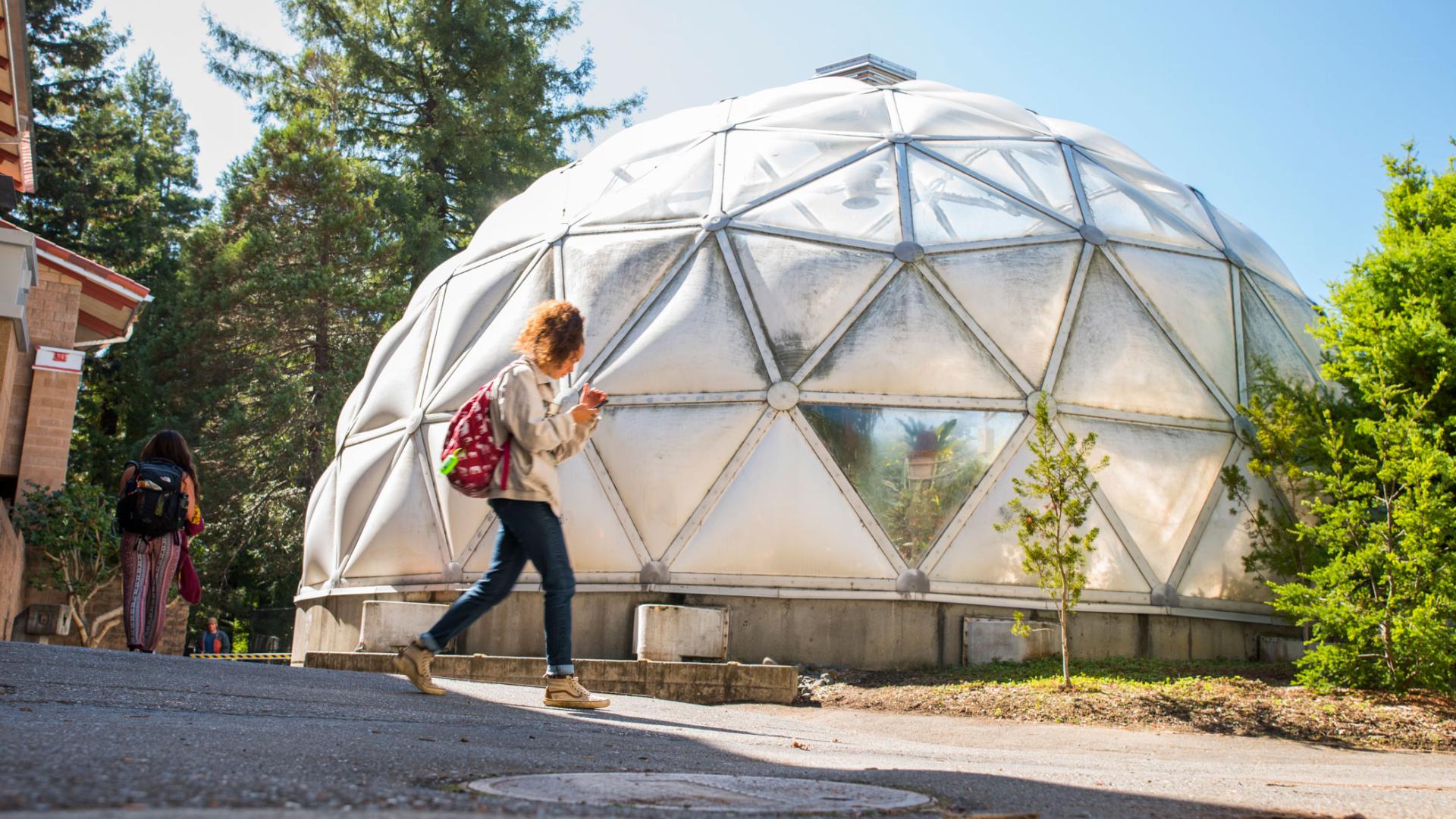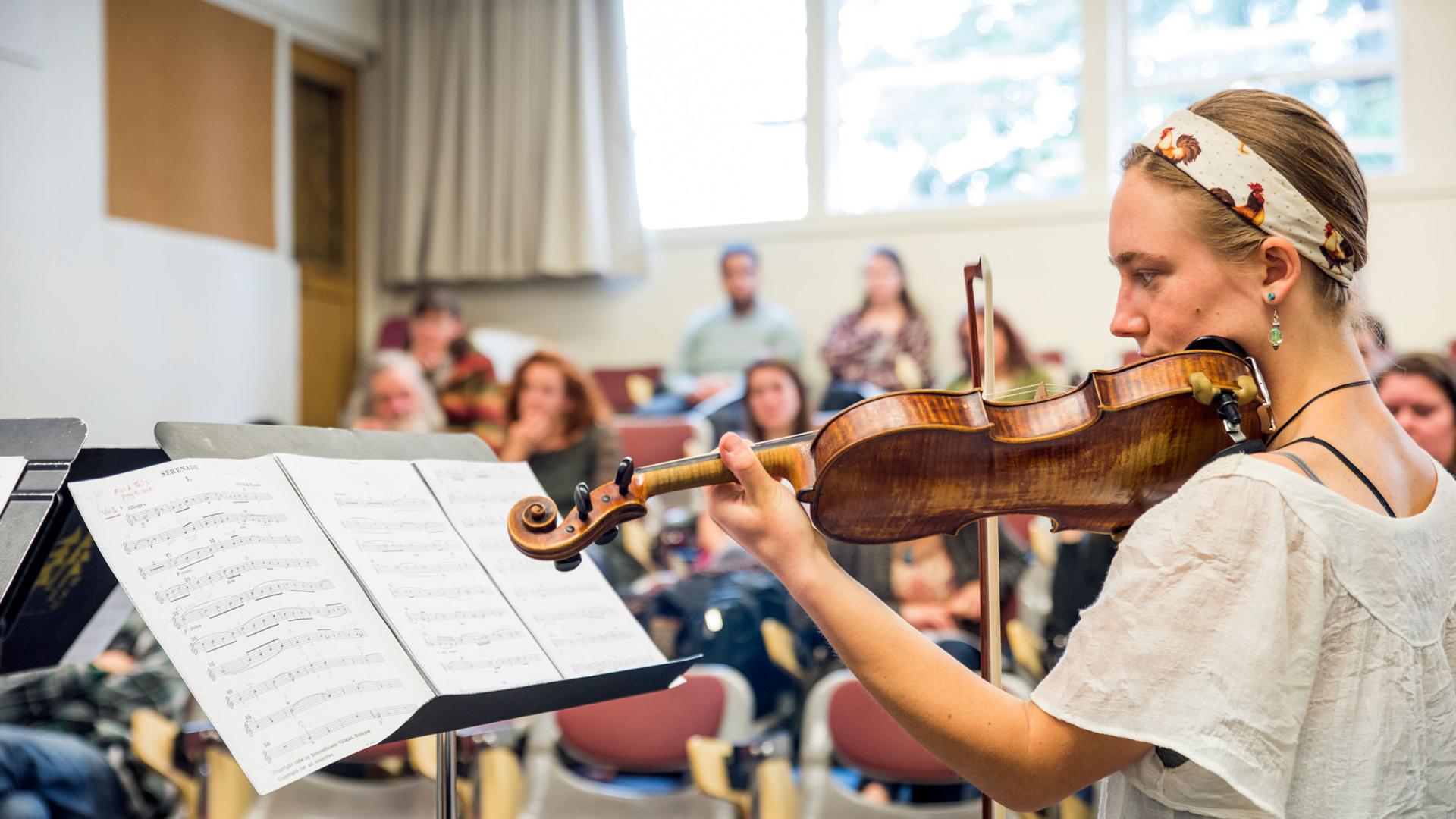May 3, 2024 | Digital Showcase | Humboldt Library
All Presenters & Abstracts
Great Blue Herons and feeding ecology (title may change at a later date)
Presentation Year: 2025
Thalia
Contreras
Wildlife
How successful great blue herons are with their feeding strategies and how anthropogenic factors may influence behavior in the ardeids.
Habitat Edge Impacts on Predators in the Arcata Community Forest
Presentation Year: 2025
Megan
Singer
Wildlife
Predators play a crucial role in ecosystem processes within various habitat types. My study aimed to analyze the impact of habitat edges on predators in the Arcata Community Forest by using remote camera traps to document predator presence in edge versus interior habitat sites. I also conducted supplemental vegetation surveys to compare the mean vegetation density at edge versus interior habitat sites. I predicted that if predator presence is influenced by habitat type and vegetation density, then predator presence would be higher at edge habitat sites than interior habitat sites, and there would be a negative correlation between predator presence and vegetation density.
Habitat Variation and Shorebird Roosting Flocks: Examining Species Composition Across Arcata Marsh
Presentation Year: 2025
Karl
Vanuska
Wildlife
This research project looks at how species composition in shorebird roosting flocks varies across different locations within Arcata Marsh. This research assess how environmental factors, such as substrate type, vegetation cover, proximity to foraging areas, and tidal conditions, influence species richness and diversity at roosting sites. As well as if behavior may change due to species composition within roosting flocks.
Harmonic Analysis of Currents within Humboldt Bay
Presentation Year: 2025
Caitlin
Williams
Oceanography
Multiyear time series of current data measured by 2 horizontal SonTek/YSI ADCPs placed mid-depth in the water column at 2 different locations in Humboldt Bay, CA, a shallow, tidally-driven estuary in northern California, were analyzed to determine the contributions of different harmonic frequencies within the bay. Spectral analysis of the time series revealed that the currents are dominated by several tidal harmonics. The 3 dominant frequencies include M2, K1, and O1, but their contribution varies spatially between the two station locations. Additional frequencies in the data indicate overtides, as well as potential interference with topography and the more variable wind-induced currents.
Hericium Erinaceus (Lions Maine) Effects on Neurogenesis, Synaptic Plasticity, and Memory Retention in Alzheimer's Patients
Presentation Year: 2025
David
Christal
School of Applied Health
This research aims to investigate the neuroprotective potential of Hericium erinaceus (Lion’s Mane mushroom), focusing on its effects on neurogenesis, synaptic plasticity, and memory retention in Alzheimer’s patients. Hericium erinaceus is rich in bioactive compounds such as erinacines and hericenones, which have been shown to stimulate nerve growth factor (NGF) synthesis, reduce oxidative stress, and protect neurons from apoptosis and inflammation. These properties of Hericium erinaceus suggest a potential role in enhancing the treatment and management of Alzheimer’s disease.
How Do Anthropogenic Disturbances Affect Marbled Godwits in Humboldt Bay
Presentation Year: 2025
Emma
Leininger
Wildlife
How Do Anthropogenic Disturbances Affect Marbled Godwits in Humboldt Bay? I looked into how different types of human disturbances effect responses and vigilance in marbled godwits.
How Does Habitat Ecological Resolution Effect Bat Population in Arcata CA and Trinity CA?
Presentation Year: 2025
Katrina
Maynez
Wildlife
Bat acoustic survey done in Arcata CA and Trinity CA across 6 different sites. How does habitat ecological resolutions effect bat population in Arcata CA vs Trinity CA?
How Does Restoration Affect Food Web Dynamics Within Quail Populations in the McKinleyville Land Trust Dow’s Prairie Educational Wetland?
Presentation Year: 2025
Zen
Godinez
Biological Sciences
The McKinleyville Land Trust’s Dow’s Prairie Educational Wetland is a 2.55-acre endangered coastal prairie wetland in California, conserved in 2009. Restoration efforts with the Wiyot Tribe and U.S. Fish & Wildlife removed invasives and reintroduced native plants, but coincided with declining California quail (Callipepla californica) populations. This study establishes the first baseline conditions, using wildlife cameras and botanical surveys to assess quail habitat suitability, examining invasive removal, predation, and fragmentation impacts. Findings will guide adaptive management to balance biodiversity and restoration, while honoring the Baduwa’t Wiyot’s ancestral homeland.
How Ecological Restoration Affects Mammalian Species Diversity and Evenness in Coastal Dune Systems
Presentation Year: 2025
Samantha
Lieburn
Wildlife
I tested the effects of differning landscape management practices at two different coastal dune systems in Humboldt County , California. I did this to see how ecological restoration of native plant compositions affected mammalian species richness and evenness.
How Parenting Styles Relate to Attachment Styles in North and South America
Presentation Year: 2025
Naomi
Huerta-Vazquez
Psychology
This review explores how parenting styles in North and South America influence children later in life. By examining a range of studies from both regions, we analyzed the long-term effects of different parenting approaches on individuals as they grow into adulthood. Parenting styles explored in our research include authoritarian, authoritative, permissive, and uninvolved. Studies also evaluated additional influences on parenting such as overprotectiveness and patriachal influence. The goal is to understand better how cultural and regional differences in parenting can shape emotional, social, and psychological development over time.
How to Stop Chronic Kidney Disease (CKD)
Presentation Year: 2025
RoAnna
Petty
School of Applied Health
Chronic kidney disease (CKD) is the ninth leading cause of death in the United States. Kidney damage is not reversible, but CKD can be stopped or its progression can be slowed. Diabetes and hypertension are the two main causes of CKD. Medical directors, nurse leaders, home care providers, and public health officials must be aware of the risks and take action to screen patients and educate them on how to prevent or manage CKD. Exercise lowers blood glucose and blood pressure and can prevent CKD. Smartwatches can be used by patients and monitored by healthcare providers to adjust physical activity, which can help stop or slow the progression of CKD.
Human Disturbance and Foraging Behavior of Aleutian Geese
Presentation Year: 2025
Molly
Smialkowski
Wildlife
Interested in the affect of human presence on foraging behavior of geese, I conducted an observational study of Aleutian geese where I compared their behavior between two sites. Individual geese were chosen at random and observed for 5 minutes as average sound in decibels and human count was recorded. During this period the behaviors displayed were also recorded. The analysis outcome highlights the impact that human presence has on the behavior of Aleutian geese.
Humboldt Forensics: Lumberjack Speech and Debate 1926 - 2025
Presentation Year: 2025
Aaron
Donaldson
Communication
A visual representation of the nearly 100 years of Intercollegiate Speech and Debate at Cal Poly Humboldt.
Hypertension in Incarcerated Adults
Presentation Year: 2025
Jennifer
Dreyer
School of Applied Health
The issue of high blood pressure in jails calls for innovative techniques to screen, intervene, and educate about cardiovascular health. There are many patients that arrive under duress, intoxicated, or have pre-existing hypertension. Most do not seek treatment for hypertension due to a lack of obvious symptoms. If a patient is found to be hypertensive, both pharmacological and non-pharmacological interventions must be implemented. It is important to distinguish individual risk factors and social needs to develop patient-centered care plans. High blood pressure management is a definitively complex issue in correctional healthcare, especially for those who experience health inequity.
Identifying Optimal Temperature Ranges that Support Juvenile Chinook Salmon (Oncorhynchus tshawytscha) Growth within the Klamath Basin
Presentation Year: 2025
Isabelle
Shirah
Wildlife
This project looks at yearly temperature ranges and growth metrics for fish sampled at three sites along the klamath basin.
Improving Cardiac Arrest Outcomes in Critical Access Emergency Departments Using the LUCAS Mechanical Compression Device
Presentation Year: 2025
Casey
Vitali
School of Applied Health
This quality improvement project, guided by the Iowa Model of Evidence-Based Practice, examines the potential impact of implementing the LUCAS mechanical chest compression device in rural hospitals. High mortality rates from cardiac arrest, partly due to inconsistent manual CPR and staffing limitations, have led to a review of the evidence supporting mechanical CPR. Proposed interventions include individual training, department-wide integration, and the development of institutional policies. The anticipated outcomes are increased rates of return of spontaneous circulation (ROSC), improved discharge survival rates, and enhanced staff competency in providing high-quality resuscitation.
James' Fabulous Mobile Dog Food Pantry: A Grassroots Initiative!
Presentation Year: 2025
James
Brother
Social Work
I developed a mobile dog food pantry to meet the needs of unsheltered pets across Humboldt County. Using donations from various sources and implementing similar models used by local nonprofits, I developed access to pet food in areas with an unmet need.
La vida en el Centro del Pueblo
Presentation Year: 2025
Brigitte
Vega
College Corp
This year I was able to work with Centro del Pueblo. A non-profit organization which
helps its community members through providing a space for the community to garden. Centro
del Pueblo also supports its latino community by advocating and providing any type of support.
During my time at Centro del pueblo I was able to meet many new people. I was excited to be
able to work alongside other latinos. This especially meant a lot to me being the change of
environment I experienced coming from Los Angeles. As a part of the organization helping out
in the garden became essential to being fully involved with the people.
Light and Dark Assay Comparison of Selected Strains of Anabaena Sensory Rhodopsin
Presentation Year: 2025
Miles
Guillot
Chemistry
Anabaena Sensory Rhodopsin (ASR) is a retinal containing membrane protein from the cyanobacteria, Anabaena (Nostoc) PCC 7120. The ASR protein undergoes a conformational change upon absorption of orange light, which causes the all-trans-retinal to be converted to 13-cis retinal and the release of the associated transducer protein (ASRT). In order to facilitate future nanolipoprotein studies we examined the efficacy of the production of ASR in several selected recombinant strains of E. Coli through a light and dark spetrophotometric analysis of the purified ASR protein.
Local Bat Activity in an Urban Context
Presentation Year: 2025
BreeLynn
Butler
Wildlife
Several bat species can be observed in Humboldt County, including the Mexican free-tailed bat (Tadarida brasiliensis), hoary bat (Lasiurus cinereus), and big brown bat (Eptesicus fuscus). The objectives of this study were to investigate what bat species occur on campus and how variables such as artificial light, weather, and lunar phase might influence bat activity. Ultrasonic acoustic recorders were deployed on the Cal Poly Humboldt campus to capture recordings of bat vocalizations. Additional data from the Arcata Community Forest during a previous year was used to compare the detected species in the forest in Spring 2019 to the detected species on campus in Spring 2025.






